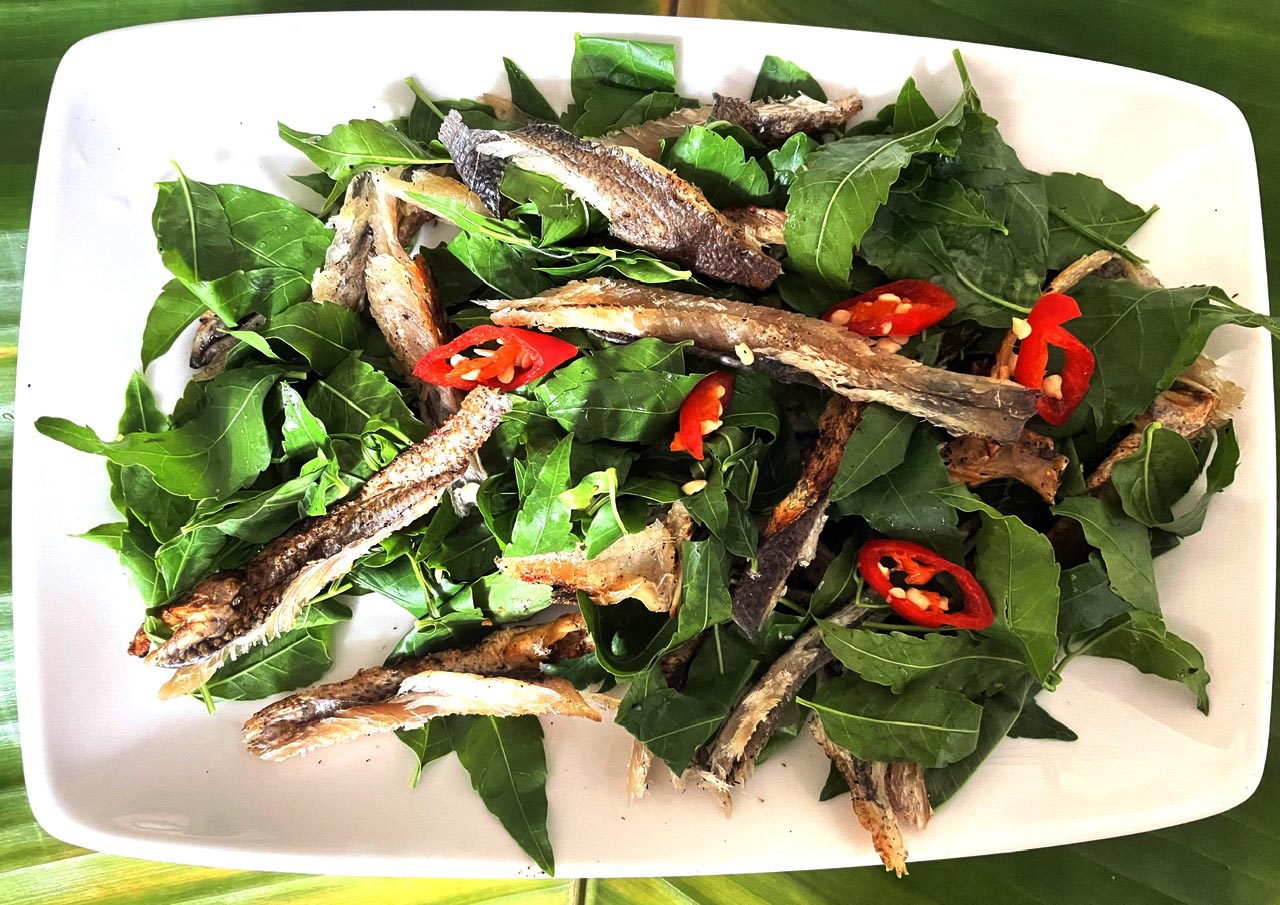The Mekong Delta province of An Giang is known for its scenic landscapes and distinctive cuisine. Among the region’s specialties is a dried fish salad mixed with neem leaves, a dish popular with locals and increasingly introduced to curious visitors.
The neem tree (scientifically known as Azadirachta indica), commonly found in the Bay Nui area, also known as That Son, which means “seven mountains” in Vietnamese, and especially in Chau Doc. Beyond its culinary appeal, neem leaves and flowers are also valued in traditional medicine for their antibacterial properties and potential benefits for digestion, inflammation, and intestinal health.
The neem leaves and flowers are seen as a rustic ingredient and often used in traditional dishes. One of the best-known preparations is a salad that combines these ingredients with dried freshwater fish. This dish has been recognized by the Vietnam Records Organization (VietKings) as one of the “Top 100 Vietnamese Specialty Dishes.”
To make the salad, young neem leaves and flowers are lightly blanched in boiling water or rice water to reduce their natural bitterness. After draining and removing the stems, they are mixed with shredded grilled dried snakehead or Snakeskin gourami fish (scientifically known as Trichopodus pectoralis), thinly sliced boiled pork belly, cucumber, julienned green mango, herbs, and roasted peanuts.
The salad is topped with a tangy tamarind fish sauce dressing that balances sweet, sour, and spicy flavors. The result is a layered taste experience — salty dried fish, rich pork belly, the crunch of peanuts, sour mango, spicy tamarind sauce, and a lingering bitterness from the neem that transforms into a mild sweetness when thoroughly chewed.
While the dish is praised for its complexity, the distinct bitterness of neem leaves may be an acquired taste for some. For those familiar with it, however, it is a cherished flavor of the region.
This specialty is not only a staple in local family meals in An Giang but is also featured at banquets and events, helping promote the culinary culture of the Bay Nui region to a wider audience.









